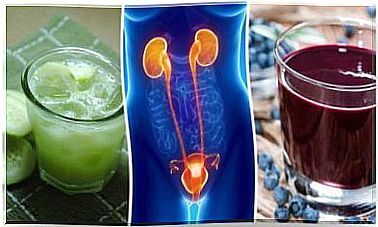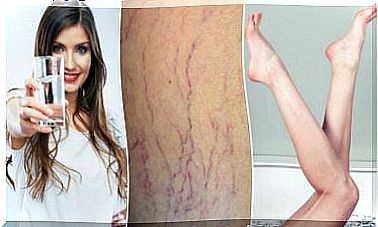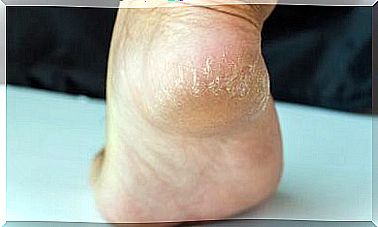Skin Itching Or Pruritus: Symptoms, Causes And Recommendations

Itchy skin or pruritus is often a reason why adults and children seek medical attention. There are many different possible causes, ranging from banal things to more serious problems.
Specialists define it as an annoying feeling that causes the urge to scratch themselves. It is usually a consequence of the body’s response to hormonal or immune stimuli. It almost always involves the substance histamine.
What is pruritus or itchy skin?
It is important to state that itching is a symptom, not a disease in itself. Thus, it can take very different forms, some of which may be related to the skin. It can also occur in a localized or generalized way.
It is important to keep an eye on it from the beginning. Are there any factors that have triggered it? What relieves it? Has it happened before? Has anything cured it before? If so, what was the body’s reaction to it? All of this will serve as a guide to diagnosis and help discover the cause.
Acute pruritus is when symptoms last less than six weeks. If it lasts longer than that, it becomes a chronic variant. It can occur in the scalp, upper body or extremities.

Primary causes of skin itching
As we have already mentioned, primary skin lesions can accompany skin itching. If so, one may have a dermatological disorder.
On the other hand , it is likely to be an external cause in people where there are no skin lesions or there is only secondary damage caused by itching.
People with pruritus and primary skin lesions
The most common skin diseases that cause generalized itching are the following:
- Hives: Characterized by the presence of swollen lesions, which may become larger or fuse and disappear.
- Scabies: An infection caused by an ectoparasite. It’s a kind of closet.
- Prurigo: Common in children. It involves bumps on the skin.
- Atopic eczema: Inflamed areas associated with atopic eczema or contact dermatitis.
- Chickenpox: A viral infection that develops blisters on the skin.
- Pityriasis rosea: Pink, peeling lesions.
- Psoriasis: A problem characterized by the presence of dandruff caused by an autoimmune disorder.
People with pruritus without primary skin lesions:
In addition to the most common disorders, we will also show here the most common diseases that cause itchy skin:
- Chronic renal failure: When the kidneys do not function normally.
- Oncological diseases: These are the most common blood-related diseases such as polycythemia vera or lymph node cancer.
- Intra- or extrahepatic cholestasis: Where bile does not flow normally.
- Hyper- or hypothyroidism: Abnormal levels of hormones released by the thyroid gland.
- Dry skin or xerosis: The elderly need special attention here, as itchy skin is common among the elderly. It is possible that dehydration is the most common cause of this population, although it may be due to other causes. It appears on the legs.
Localized pruritus
Localized pruritus that occurs without a rash suggests the possibility of psychogenic or neuropathic itching. The symptoms that can occur in particular in these individuals are associated with a burning sensation, pain or loss of sensation.
It is due to nerve conduction disorders which are associated with neuritis. The peripheral nerves transmit information poorly and generate a feeling of itching in the skin, causing the person to constantly itch.

General care until an accurate diagnosis is made
Pruritus is a common disorder, but specialists still do not fully understand the pathogenic mechanisms that cause the feeling of itching. A primary part of the development of these disorders depends on the presence of a primary skin disorder.
If primary skin lesions are identified but the diagnosis remains uncertain, a biopsy of the skin may be helpful. In general, the absence of obvious and visible problems suggests that the cause is not dermatological.
Despite the fact that many of the causes are banal and the lesions often resolve themselves spontaneously, there are other forms that require medical attention.
When one wants to determine the cause of one’s pruritus, it is best to keep one’s nails short and clean and only itch in the area of the palm. Avoid tight-fitting clothing, try choosing cotton over synthetic fabric or wool, and avoid long, hot baths.
One should use neutral soap and moisturizing creams. Specialists also do not recommend consuming coffee, alcohol or spicy foods, as it can all stimulate the release of histamine in the body. There are many options for treatment, but it is always best to prioritize a treatment from the doctor.









